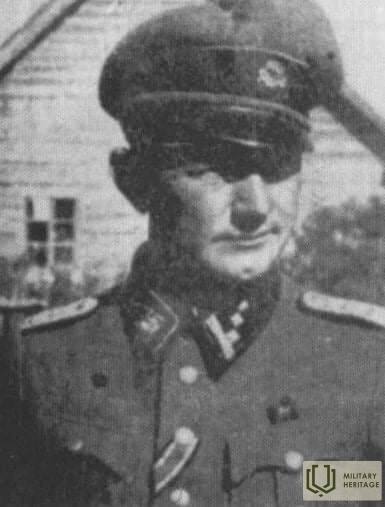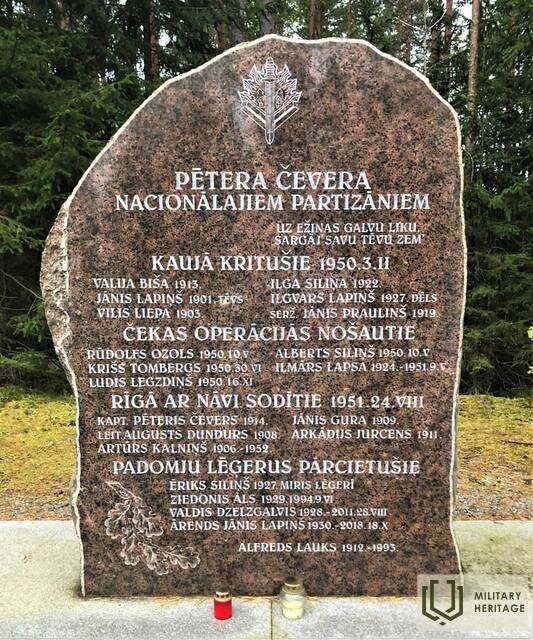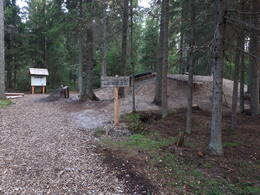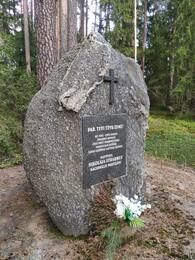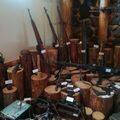Pēteris Čevers - national partisan and commander of a partisan group
Pēteris Čevera - national partisan and commander of a national partisan group
Pēteris Čevers was born on 9 January 1914 in Barkava parish, Rezekne County.
He graduated from the Military School in 1937 and served in the 1st Cavalry Regiment until 1940.
After the Soviet occupation, in the spring of 1941 he was transferred to the 186th Infantry Regiment of the 24th Territorial Rifle Corps.
On 14 June 1941, at the Ostrov camp, when he heard about the arrests, he joined the "Guardians of the Homeland" unit led by Lieutenant Colonel Kārlis Aperāts, together with several other officers.
In February 1942 he volunteered for the 23rd Order Service Battalion.
From March 1942 to February 1943, after special training, he served in the special task regiment "Brandenburg 800".
In March 1943 he joined the Latvian SS Volunteer Legion, later becoming commander of the 14th Anti-Tank Company of the 43rd Regiment of the 19th Division, with which he walked the battle routes from the banks of the Velikai River to Kurzeme. He was awarded the Iron Cross 2nd and 1st Class, the Military Cross of Merit and the Silver Badge of the Impact.
After the surrender of the German troops in Courland, P. Chever, together with several officers and soldiers of his regiment, settled in the forests of the parish of Vandzene in the Talsi district, where he joined the group of Captain Nikolay Straume. From May 1948, P. Čevers became the commander of the group in the territory of Vānsienė and other surrounding parishes of the Talsi district.
As a result of the betrayal, P. Chever and six other members of the group were captured on the night of 1-2 November 1950. On 3 April 1951, the Military Tribunal of the Baltic Military District sentenced P. Chever to the maximum punishment. The sentence was carried out on 24 August 1951.
Pēteris Čevers was a soldier of the Latvian Army, a captain of the Latvian Legion, a national partisan (from 9 May 1945), a commander of a national partisan group (1948-1950).
Vandzene partisans and their supporters. The tragedy of the Blum family and the mystery of the "Valdu" houses / Article (lsm.lv)
Author: Uldis Neiburgs (Dr. Hist., researcher at the Institute of Latvian History, University of Latvia)
Related timeline
Related topics
Related objects
Pēteris Čevers national partisan bunker
The bunker of the national partisans of Peter Chever is located in Lauciene municipality, about 4 km from the Talsi-Upesgrīva road. A trail covered with wood chips leads to the bunker. The renovated 31 square metre bunker is made of a concrete frame finished with half-logs of logs to create an authentic feel.
Captain Chever's group completed the bunker in the forest near Vangzene at the end of October 1949. It was planned to survive the winter of 1949-50. On 3 February 1950, the local forester betrayed the partisans and the bunker was attacked by a Cheka unit of more than 300 soldiers. At that time there were 19 people in the bunker - 17 men and two women. Six partisans fell in this unequal battle, but the others managed to break through two chains of Cheka siege by fighting their way through. By the end of the winter the partisans took refuge in surrounding houses with their supporters, but in the spring the group reunited until it was captured and destroyed in November 1950. After an attack by Cheka troops, the bunker was blown up and before it could be rebuilt, only a water-filled pit remained.
Nikolajs Straume National Partisan Memorial Stone
The memorial stone is located on the Sloka-Talsi highway, near the Rideļi mill.
The national partisan group of Captain Nikolajs Straume (“Buks”) was formed soon after the capitulation of the German army and operated in the forests of Tukums and Talsi districts. The core of the group was made up of officers and soldiers of the Latvian Legion, who were also joined by local residents. The names of 38 members are known. In December 1945, the group set up a winter bunker for 10–12 fighters in Lauciena parish. In January 1946, the troops of the Soviet People’s Commissariat of State Security attempted to surround the camp, but the entire group successfully escaped the encirclement without losses. Between March 1947 and October 1948, Soviet troops carried out several operations, arresting supporters of the national partisans and killing fighters in several battles. Nikolajs Straume was shot on October 13, 1948.
Nikolajs Straume was one of the leaders of the joint activities of the Talsi and Tukums national partisan groups.
Museum of the National Resistance Movement in Renda
The museum is located a few kilometres from the centre of Renda parish. The exhibit tells about the 50-year-long resistance movement in Latvia: resistance to the first Soviet occupation, resistance to the Nazi German occupation, and the armed and non-violent resistance to the Soviet occupation. The exhibit is located in two buildings. The first building houses evidence of the first Soviet occupation and German occupation. The exhibit showcases a restored barn building where the focus lies on the National Partisan War. Between the two buildings there is a bunker with an authentic layout and trenches used by soldiers. Located near the museum in Renda, excavations, blindages and an obstacle course serve as a training ground for youth guards and anyone interested. Visits must be booked in advance.
One of the largest battles of the national partisans, called the Āpūznieki Battle, took place in January 1946 not far from here. The battle saw the Kabile National Partisan Group overpower much larger forces of the occupying power. Featuring information stands, the battle site is now home to a rest area.




